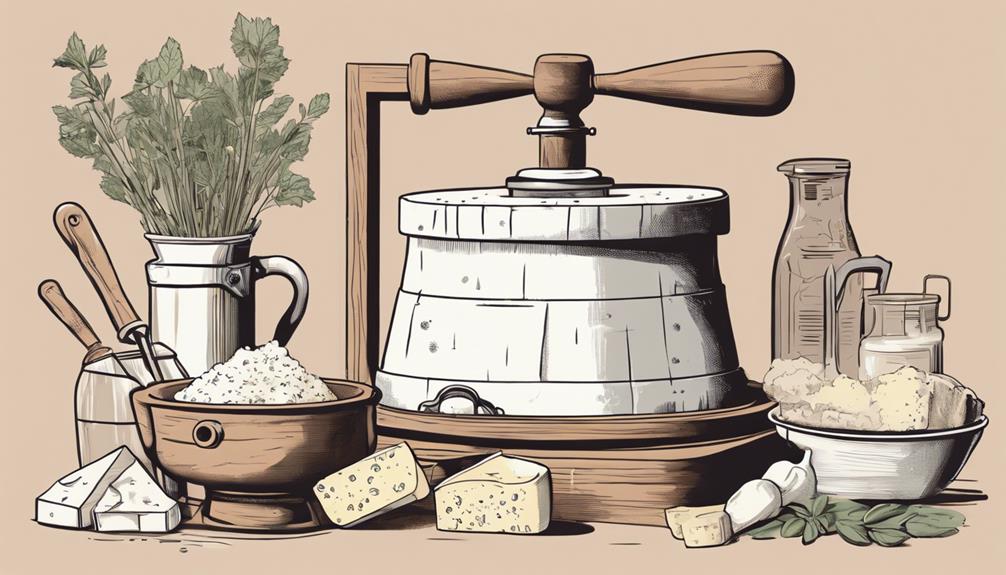See All: Cheese Making
Watch How To Do This Here…
YES! You can make cheese at home. Take our FREE 4-Part video training series to simplify cheesemaking for everyone. No waste. No overwhelm. No missing steps. You can make delicious, healthy cheese, even if you only have access to grocery store milk and regular kitchen equipment…
Click Here To Watch Step By Step Now
“Hi! I’ve recently started experimenting with cheese making in my little farm in Oregon, USA. I’m particularly interested in understanding traditional methods for curd and whey separation, as I’ve heard that’s crucial for getting the right texture and flavor in cheeses. Could you explain the different methods and why they are important?” Thanks, Emily, Oregon, USA.
Understanding Traditional Methods for Curd and Whey Separation
Hey Emily! It’s fantastic that you’re diving into the world of cheese making. The process of separating curds and whey is key to developing the right texture, flavor, and quality of your cheese. Let me take you through some of the traditional methods that have been used by cheesemakers for centuries.
Why is Curd and Whey Separation Important?
Before we get into the methods, it’s good to understand why separating curds from whey is so crucial. When you add a coagulant (like rennet) to milk, it causes the milk proteins to solidify (forming curds) and the liquid part (whey) to separate. This step influences:
- Texture: The tightness and consistency of curds affect the eventual texture of the cheese.
- Moisture Content: Proper separation controls the moisture level in the final cheese, impacting aging and flavor development.
- Flavor: The extent of whey removal can concentrate the flavors within the curds.
Traditional Methods for Curd and Whey Separation
Traditional methods for separating curds and whey can vary, but the principles remain quite consistent. Here are some of the most common techniques:
The Cheese Cloth / Draining Bag Method
This method is probably one of the oldest and simplest ways to separate curds from whey. Here’s how it works:
- After coagulation, cut the curd into small pieces to release whey.
- Scoop the curds into a cheesecloth or draining bag.
- Hang the cloth or bag to allow the whey to drain naturally by gravity.
- The length of hanging time will affect the moisture content of the curds.
Example: Many traditional farmers’ cheeses, like Queso Blanco, use this method to achieve a soft texture with a slight tang.
The Ladling Method
Ladling is another ancient technique often used for semi-soft cheeses like Brie. This method involves the careful handling of curds to preserve their structure:
- Cut the curds into small, uniform cubes.
- Gently stir the curds to release whey without breaking them too much.
- Use a slotted spoon or ladle to transfer the curds into molds lined with cheesecloth.
- Allow the whey to drain slowly from the curds in the molds.
This method helps create delicately textured cheeses with a creamy interior.
The Hand-Stirring and Heating Method
Particularly used for hard cheeses like Parmesan or Cheddar, this involves more active management of the curds:
- Cut the curd into small pieces.
- Gently heat the curds while stirring, facilitating further whey release.
- Continue stirring until curds reach the desired firmness.
- Transfer curds into molds for additional pressing and whey removal.
The moderate heating helps firm up the curds, making this method suitable for cheeses that require aging.
The Pressing Method
Pressing is essential for many hard and semi-hard cheeses. It involves:
- Placing curds in a mold lined with cheesecloth.
- Applying weight evenly across the curds to expel whey over a period of hours or even days.
- Regularly turning the cheese to ensure uniformity and texture.
Two types of pressing can be used:
- Manual pressing: By hand, applying gentle and even pressure.
- Mechanical pressing: Using a device to apply consistent, controlled pressure.
Example: Cheddar cheese is often created using a combination of hand-stirring, heating, and pressing to achieve its characteristic texture and flavor.
Why Are These Methods Still Relevant?
Even with modern technology, traditional methods remain relevant because they offer a level of control and artistry that machines can’t fully replicate. They allow for subtle variations that can lead to unique flavors and textures, rich in tradition. These methods are tangible links to the past, preserving time-honored practices while allowing for individual creativity.
Common Challenges and Solutions
Emily, here are a few common issues you might encounter and some tips on how to handle them:
- Curds too soft: Ensure you’re heating the milk to the right temperature before adding rennet. Overheating or using low-quality milk can result in soft curds.
- Whey not separating: Check your rennet’s expiry date and its activity level. Sometimes, the rennet might be too weak to coagulate the milk properly.
- Bitter curds: This could arise from too much rennet or over-aged milk. Adjust the rennet quantity or switch to fresher milk.
Conclusion
Emily, I hope this gives you a good understanding of the traditional methods for separating curds and whey. By mastering these techniques, you’ll gain control over the texture, moisture, and flavor of your cheese. Each method has its charm and application, allowing you to create a variety of delicious cheeses just like the artisans of old!
Final Thoughts…
Emily, thank you for your question. The art of cheese making is a beautiful, tactile experience that connects us to centuries of tradition and skill. Mastering these traditional methods for curd and whey separation will empower you to craft cheeses with remarkable textures and flavors. Keep experimenting and enjoying the journey!
Return To: Cheese Making
Free Step By Step Cheese Making Videos…
YES! You can make cheese at home. Take our FREE 4-Part video training series to simplify cheesemaking for everyone. No waste. No overwhelm. No missing steps. You can make delicious, healthy cheese, even if you only have access to grocery store milk and regular kitchen equipment…

